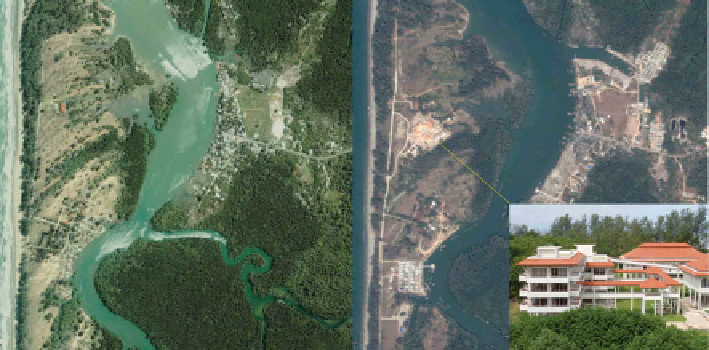Environmental Engineering Reference
In-Depth Information
In Hat Sai Khao village, the large wreckages were removed by the backhoes sup-
ported by the Ranong Provincial Administration Organization. Most of the rest of
the small rubbles were cleaned up by residents, which also took about 2 months.
The government allocated the emergency recovery fund to compensate the
victims due to their losses. For the case of losing lives, the relatives of the victims
received 20,000 baht for each casualty (The average exchange rate in 2005 varies
from approximately 38.4 to 41.7 baht/dollar; x-rates.com
2014
.). The injured
received between 2,000 and 5,000 baht. The people who lost their job received a
compensation of 2,000 baht (Nitcharat
2005
).
6.6
Restoration Processes
6.6.1
Reconstruction of the Residences and Buildings
Many buildings and residences in the Andaman Coastal Research Station for
Development were either partially or completely damaged. Some partial damaged
buildings were repaired and used as temporary offi ces. In 2005, the university
received the special recovery fund from the government for about 171 million baht
to build a new research and development center and to acquire a replacement of
scientifi c equipment that were damaged by the tsunami (RCRRS and ACRSD
2005
). The construction of the new buildings in the research center area started in
2006 and completed in 2008. The new complex building was designed to be a tsu-
nami resistant building and could be used as an emergency tsunami shelter for both
ACRSD's employees and the residents nearby (Fig.
6.6
).
Fig. 6.6
The satellite images of Kasetsart University's Andaman Coastal Research Station for
Development before (
left
: image taken on 6/5/2003) and after the tsunami (
right
: photo taken on
2/3/2007). Note the new research building in the center that was designed for additional purpose as
an emergency tsunami evacuation shelter (Source: Google Earth)

Search WWH ::

Custom Search